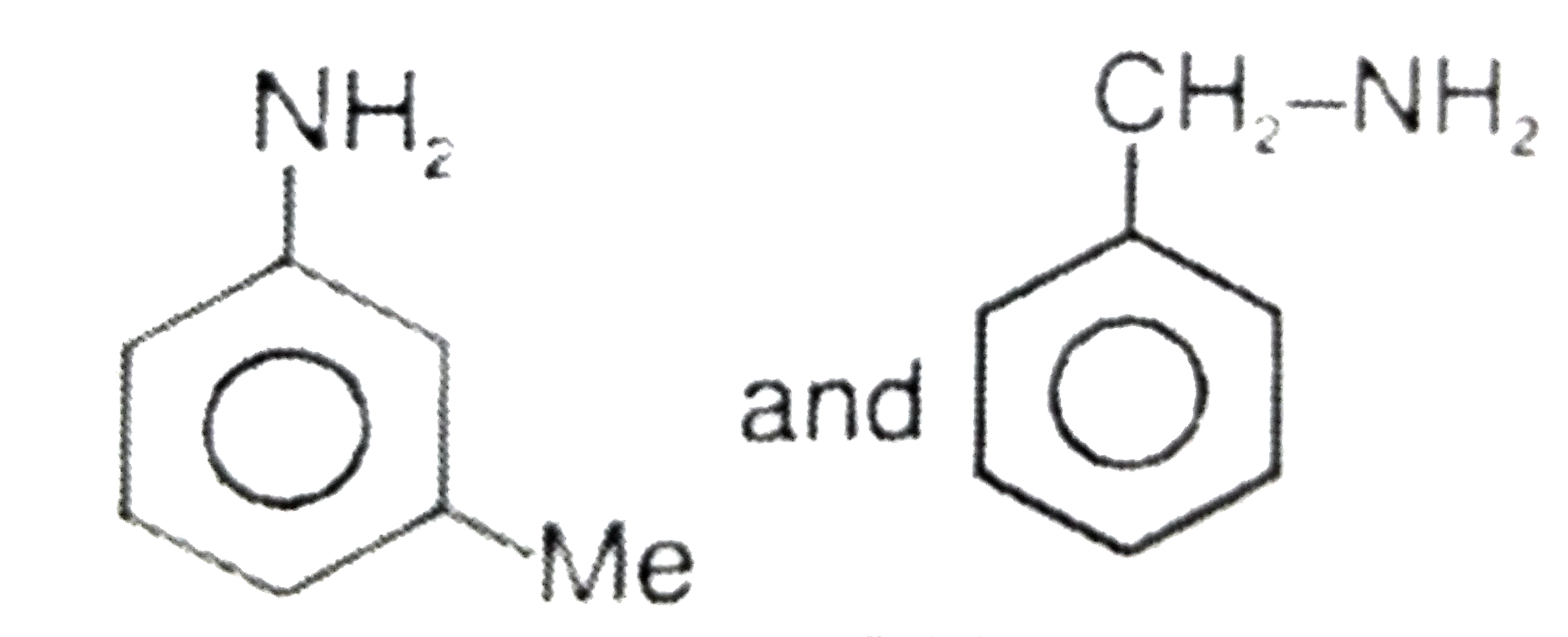Formic acid and formaldehyde can not be distinguished by treating with
Benedict's soltuion
Tollen's reagent
Fehling's solution
NaHCO3
The correct Answer is:D
To solve the question of how formic acid and formaldehyde cannot be distinguished by treating with certain reagents, we will analyze the properties of both compounds and the reactions they undergo with the given reagents.
1. Identify the Structures:
- Formic acid (HCOOH) has the structure:
H|O=C|OH
- Formaldehyde (HCHO) has the structure:
H|O=C|H
2. Analyze the Reagents:
- Benedict's Solution: This reagent is used to test for reducing sugars and aldehydes. Both formic acid and formaldehyde contain the aldehyde functional group (C=O), so both will react with Benedict's solution, leading to a positive test.
- Tollens' Reagent: This reagent is also used to test for aldehydes. Since both formic acid and formaldehyde are capable of reducing Tollens' reagent, they will both give a positive result.
- Fehling's Solution: Similar to the previous two, Fehling's solution tests for the presence of aldehydes. Both compounds will react positively with Fehling's solution due to the presence of the aldehyde group.
3. NaHCO3 Test:
- Formic acid is a carboxylic acid and will react with sodium bicarbonate (NaHCO3) to produce carbon dioxide (CO2), water (H2O), and a salt. This reaction can be represented as:
HCOOH+NaHCO3→CO2+H2O+NaCOO(sodiumformate)
- Formaldehyde, on the other hand, does not have an acidic hydrogen and will not react with NaHCO3. Therefore, it will not produce CO2 or water.
4. Conclusion:
- Formic acid and formaldehyde can be distinguished by the NaHCO3 test, as only formic acid will react and produce gas. However, they cannot be distinguished by Benedict's solution, Tollens' reagent, or Fehling's solution, as both will give positive results with these reagents.
Final Answer:
Formic acid and formaldehyde cannot be distinguished by treating with Benedict's solution, Tollens' reagent, and Fehling's solution.
- Formic acid (HCOOH) has the structure:
H|O=C|OH
- Formaldehyde (HCHO) has the structure:
H|O=C|H
- Benedict's Solution: This reagent is used to test for reducing sugars and aldehydes. Both formic acid and formaldehyde contain the aldehyde functional group (C=O), so both will react with Benedict's solution, leading to a positive test.
- Tollens' Reagent: This reagent is also used to test for aldehydes. Since both formic acid and formaldehyde are capable of reducing Tollens' reagent, they will both give a positive result.
- Fehling's Solution: Similar to the previous two, Fehling's solution tests for the presence of aldehydes. Both compounds will react positively with Fehling's solution due to the presence of the aldehyde group.
- Formic acid is a carboxylic acid and will react with sodium bicarbonate (NaHCO3) to produce carbon dioxide (CO2), water (H2O), and a salt. This reaction can be represented as:
HCOOH+NaHCO3→CO2+H2O+NaCOO(sodiumformate)
- Formaldehyde, on the other hand, does not have an acidic hydrogen and will not react with NaHCO3. Therefore, it will not produce CO2 or water.
- Formic acid and formaldehyde can be distinguished by the NaHCO3 test, as only formic acid will react and produce gas. However, they cannot be distinguished by Benedict's solution, Tollens' reagent, or Fehling's solution, as both will give positive results with these reagents.
Formic acid and formaldehyde cannot be distinguished by treating with Benedict's solution, Tollens' reagent, and Fehling's solution.
Similar Questions
Knowledge Check
 can be distinguished byAI2+NaOHBNaSO3HCNaCN/HClD2,4-DNP
can be distinguished byAI2+NaOHBNaSO3HCNaCN/HClD2,4-DNPPhenol and benzoic acid can be distinguished by :
Aaqueous NaHCO3Baqueous NaNO3Caqueous NaOHDconc. H2SO4
Formic acid and acetic acid can be distinguished with
View SolutionPhenol and carboxylic acid can be distinguished by
View SolutionPhenol can be distinguished froma acetic acid by
View SolutionMalonic acid and succinic acids are distinguished by:
View SolutionFormic acid is obtained when :
View SolutionFormic acid is more acidic than
View Solution

 can be distinguish by
can be distinguish by